
Ecology is the study of the relationship of organisms to one another and with their environment. The U.S. National Park System protects many different kinds of ecosystems and all national parks strive to conserve the ecological processes at work within their boundaries. From the cactus studded landscape of the Sonoran desert to the moss and fern enrobed temperate rainforests of the northwest, and from subtropical coral reefs to alpine ice fields, there are many unique park ecosystems to explore. Some parks are known for their rich biodiversity. Others are known for their iconic species, such as bears fishing at Katmai, bison roaming in Yellowstone, or the Saguaro Cactus, the namesake of Saguaro National Park. Combining ground-based views with the bigger picture we get from space can enhance our understanding of the interactions at play in these systems. Take a space-based view of the ecological stories of these national parks with the Earth Observatory images and articles.
Guiding Questions and Explorations
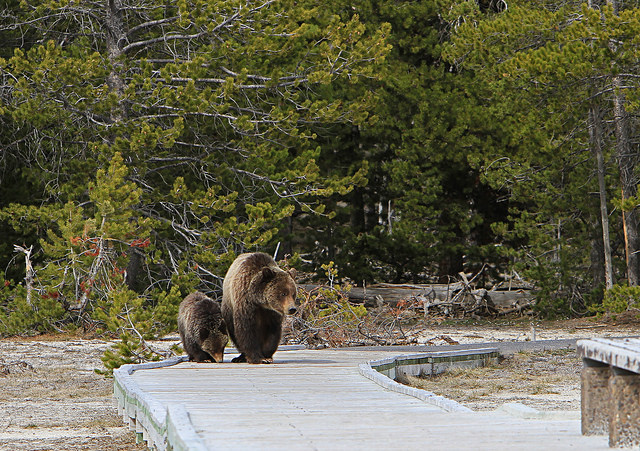
Hundreds of grizzly bears make their home in the Greater
Yellowstone ecosystem (NPS Photo)
- What unique information can a NASA satellite image tell us about the ecosystems found in a National Park that can't be determined in a photograph taken on the ground?
- Why is maintaining biodiversity important in our national parks?
- NASA satellite images allow you to see differences in park ecosystems. How could you use your senses of smell, hearing and touch to learn about the different ecosystems in a park?
- Saguaro, Sequoia, and Redwood national parks are noted for their native species and unique ecosystems. Read the articles to discover similarities and differences exhibited in the plants, animals and environments of these sites.
- If you were an ecologist, which national park would you want to work in and why?
- Explore climate change and your national parks.
List of Parks:
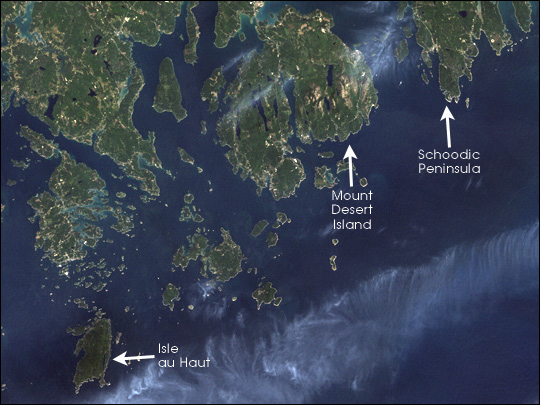 Acadia National Park
Acadia National Park
This first national park East of the Mississippi consists of 35,000 acres on two islands in a unique ecological transition zone. Local families campaigned and donated land to help create this park.
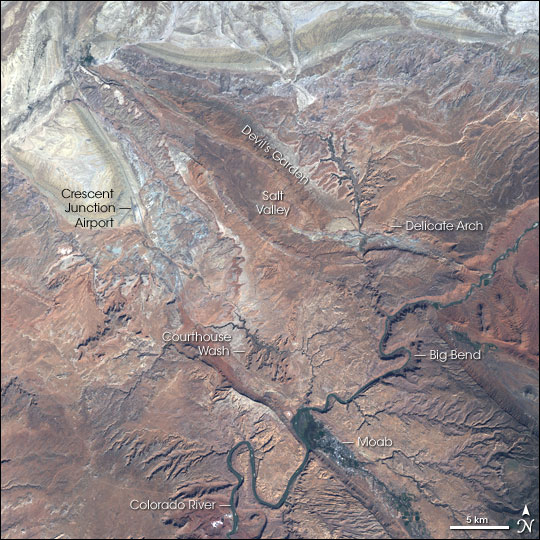 Arches National Park
Arches National Park
Renowned for its namesake rock arches and unique geology, this 119 square mile park also harbors many rare and endangered desert species.
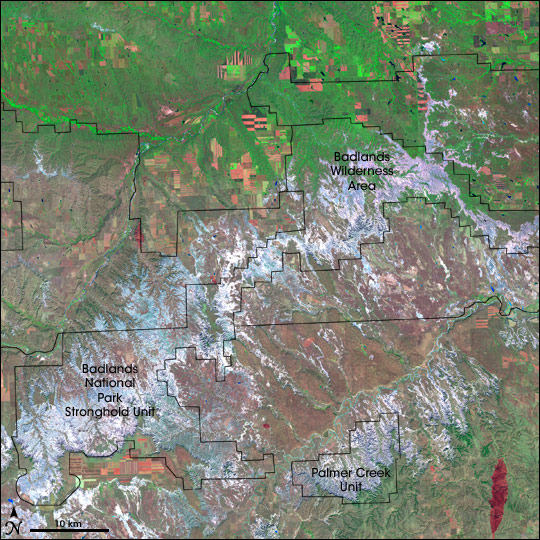 Badlands National Park
Badlands National Park
Partially co-managed by the Ogallala Sioux Tribe, the Badlands are named for their harsh weather and marginal conditions for agriculture. In this satellite view, the vegetation characteristics of the park can be clearly seen.
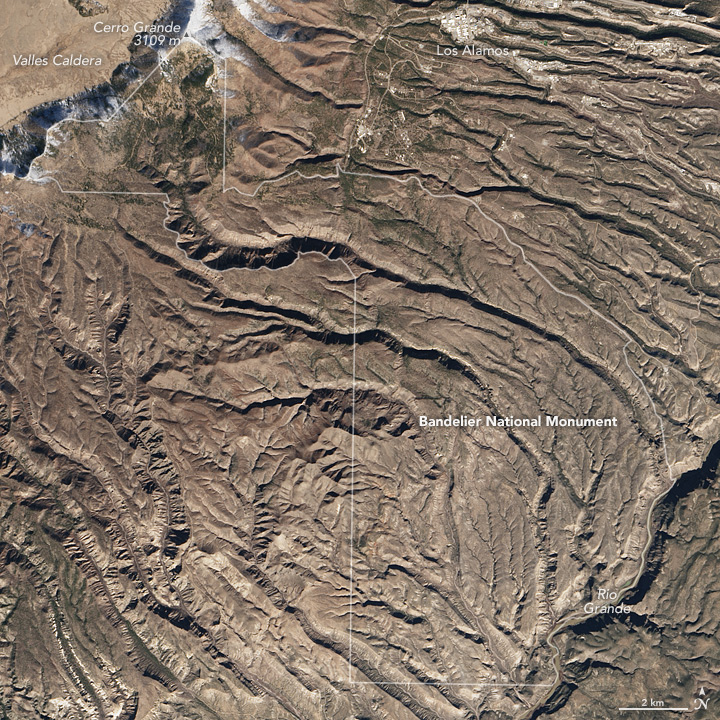 Bandelier National Monument
Bandelier National Monument
Bandelier National Monument was once covered by evergreens at higher elevations before they were wiped out in a fire. Now vegetated by shrubs and grasses Bandelier still protects the ancient dwellings of the Pueblo civilization.
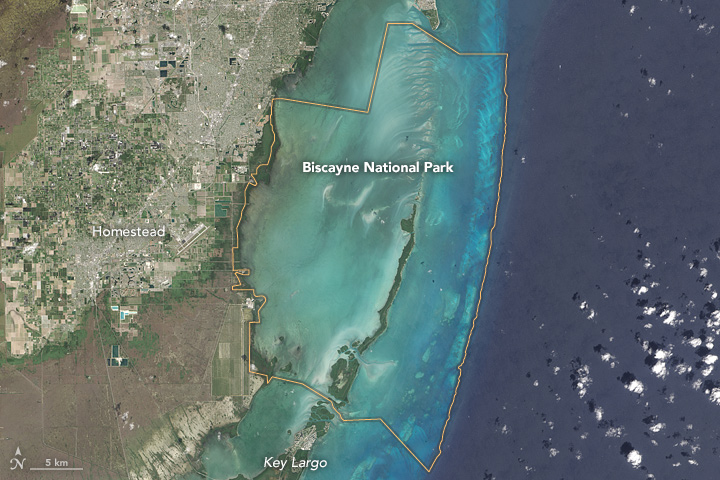 Biscayne National Park
Biscayne National Park
With 95 percent of this park under shallow coastal waters, Biscayne protects one of the most extensive stretches of coral reef in the world. But what's on land is equally important - the longest stretch of mangroves on the east coast.
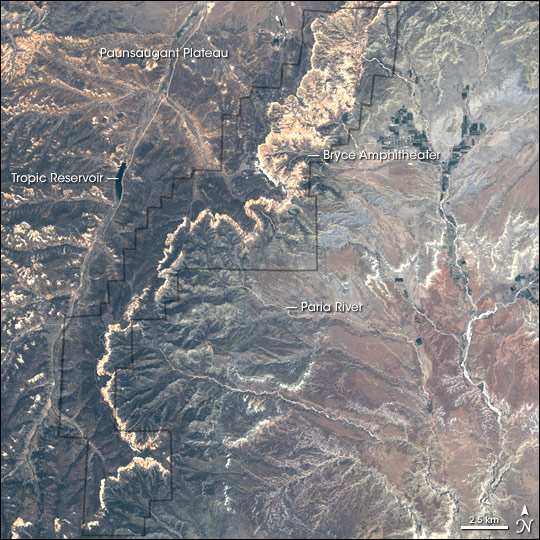 Bryce Canyon National Park
Bryce Canyon National Park
Inhabited by humans for nearly 10,000 years, and known for its rich collection of rock spires, known as "hoodoos," this satellite view reveals the varied rock and vegetation colors of the park.
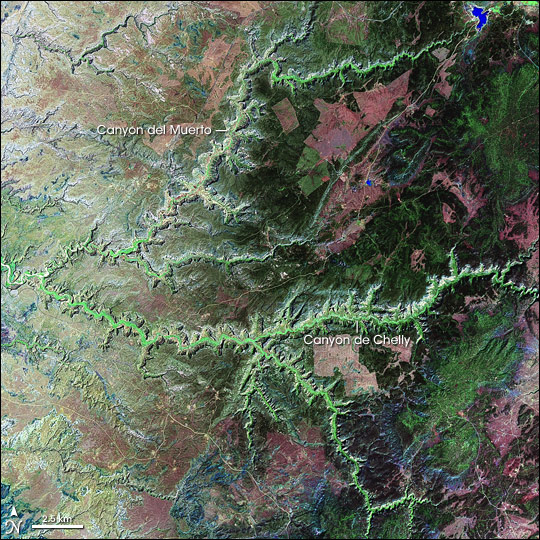 Canyon de Chelly National Monument
Canyon de Chelly National Monument
This monument is unique in the U.S. National Park system because it lies entirely on Navajo Tribal Trust Land. Members of the Navajo Nation still live in the rugged, harsh, and beautiful landscape.
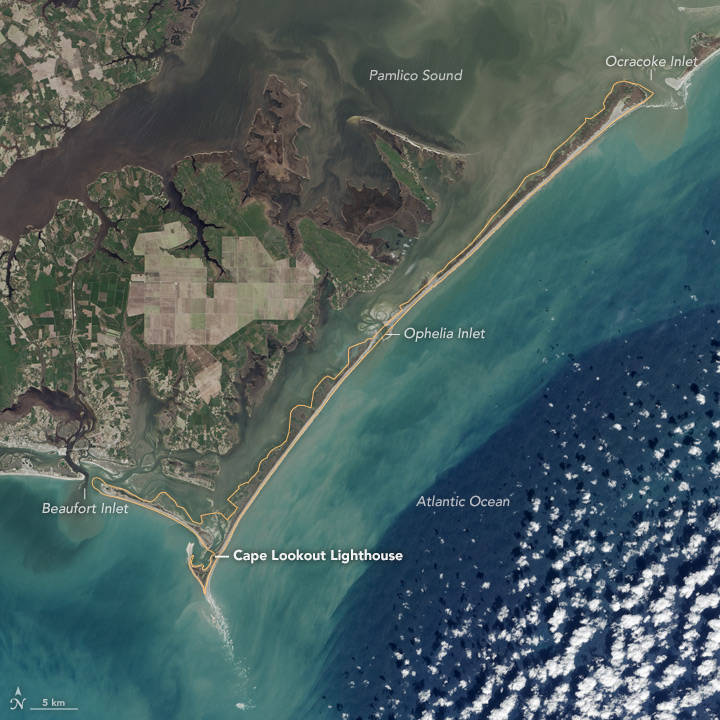 Cape Lookout National Seashore
Cape Lookout National Seashore
Cape Lookout National Seashore stretches 56 miles along the coast of North Carolina. Encompassing a string of narrow barrier islands, it offers a haven for loggerhead sea turtles and more than 275 species of birds.
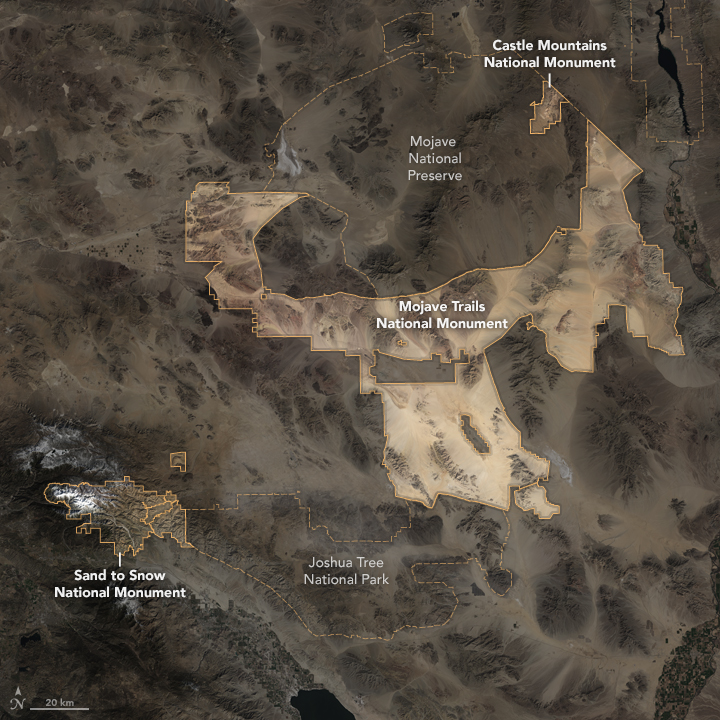 Castle Mountains National Monument
Castle Mountains National Monument
In February 2016, the U.S. Government added three new national monuments to an existing protected land area in California- making it the world's second largest desert preserve.
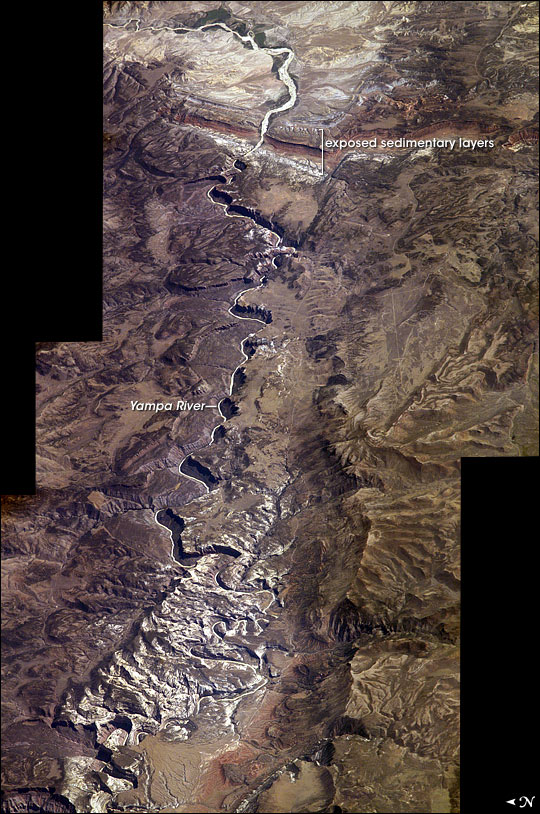 Dinosaur National Monument
Dinosaur National Monument
This oblique view of Dinosaur National Monument was formed from a mosaic of four astronaut photographs taken from the International Space Station.
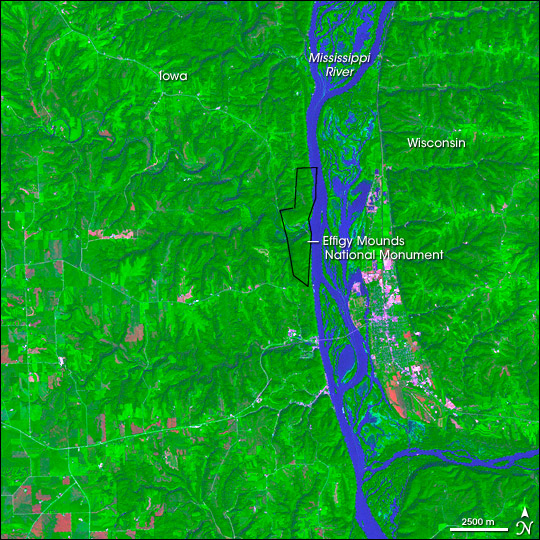 Effigy Mounds National Monument
Effigy Mounds National Monument
Effigy Mounds National Monument is the largest known collection of Native American mounds in the U.S. Geographical features of the region seen in this image help explain why human cultures have occupied this part of the country for so long.
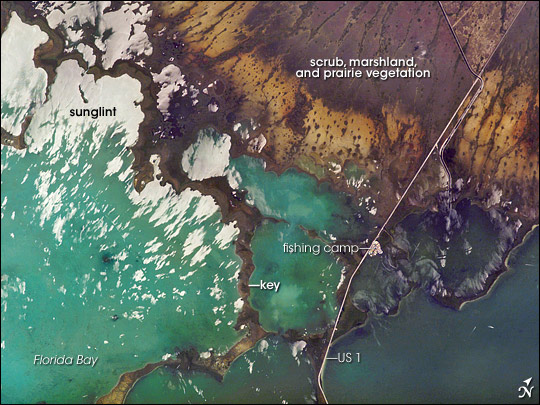 Everglades National Park
Everglades National Park
Everglades National Park in southern Florida is the largest subtropical wilderness in the United States. Known as the "river of grass," the Everglades wetlands and wooded uplands host a variety of endangered species.
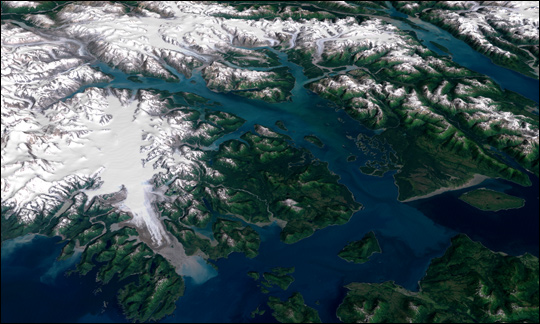 Glacier Bay National Park and Preserve
Glacier Bay National Park and Preserve
Glacier Bay National Park and Preserve has been declared as a UN Biosphere Reserve and a World Heritage site. As new land has been revealed by the retreating glaciers, a sequence of new species have gradually moved into the exposed areas.
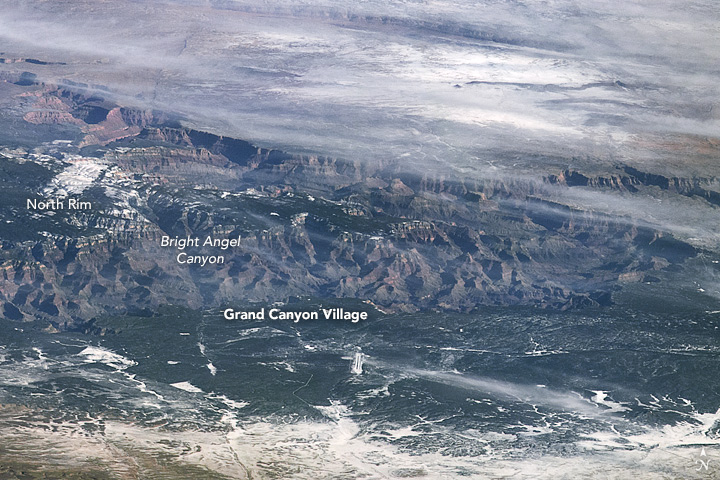 Grand Canyon National Park
Grand Canyon National Park
The Grand Canyon stretches 277 river miles across northwestern Arizona. It's not size alone that makes it a natural wonder. It is the spectacular variety of ecosystems, micro-climates, and life forms that make it the grandest of canyons.
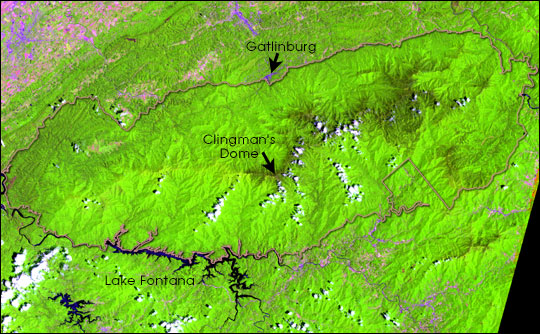 Great Smoky Mountains National Park
Great Smoky Mountains National Park
Receiving more annual rainfall than anywhere in the lower 48 states outside the Pacific NW, it is one of the largest blocks of deciduous, temperate old growth forest in N. America. Almost 95% is forest, with roughly 25% old growth forest.
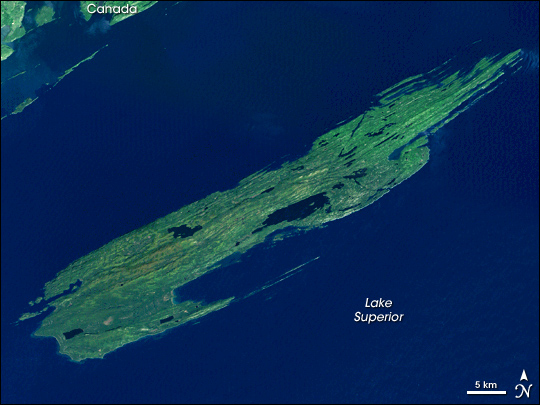 Isle Royale National Park
Isle Royale National Park
By virtue of its isolation, lack of roads and closure during five months of the year, Isle Royale retains a relatively pristine environment. The wilderness provides wildlife biologists a unique opportunity to study predator-prey populations.
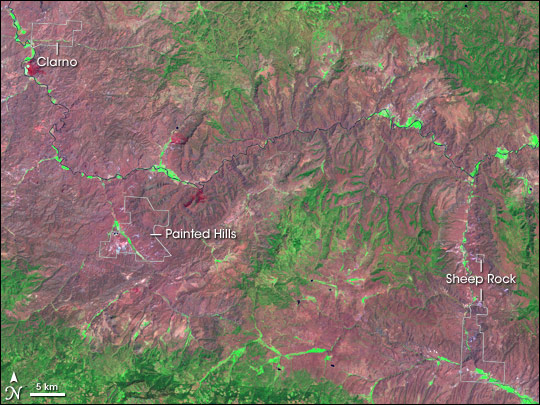 John Day Fossil Beds National Monument
John Day Fossil Beds National Monument
Uniquely spread out through three different areas of the John Day River drainage, this national monument features an expansive collection of fossils representing a period of over 40 million years.
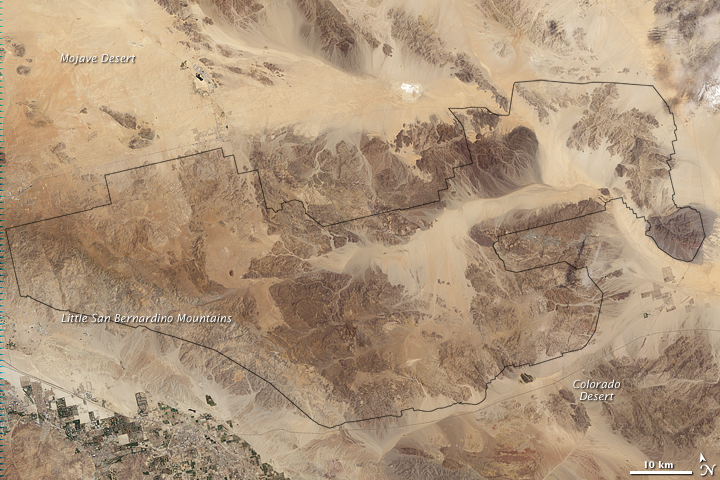 Joshua Tree National Park
Joshua Tree National Park
Three major topographic and climatic zones merge in this park, resulting in great biodiversity. The park's namesake, the Yucca brevifolia, nicknamed the Joshua tree, is the most iconic of the nearly 700 local plant species.
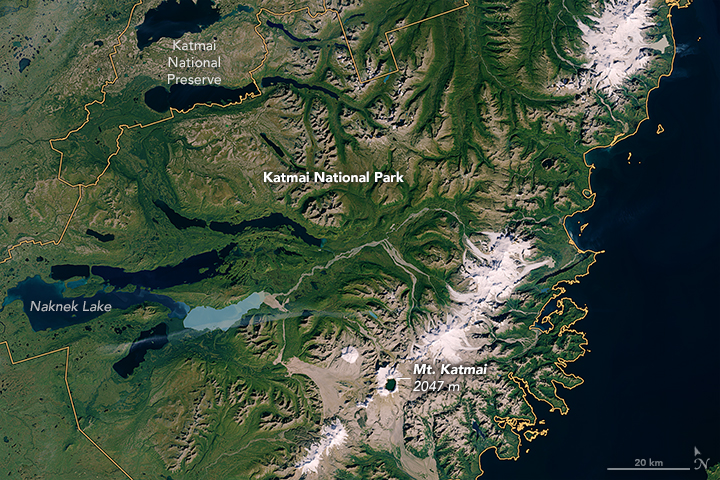 Katmai National Park and Preserve
Katmai National Park and Preserve
First established by the U.S. government in 1918 to protect an extreme volcanic landscape, Katmai came to be recognized for more than just its volcanism as ecologists learned about the thriving ecosystem there.
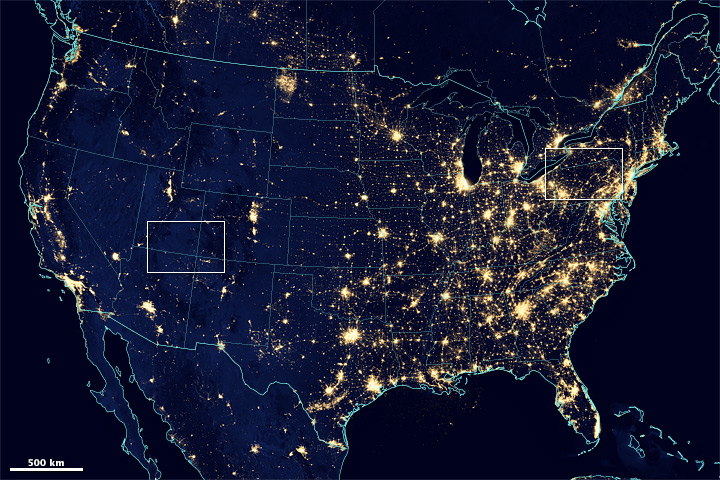 Natural Bridges National Monument
Natural Bridges National Monument
Parks are achieving certification from the International Dark Sky Association, an organization that calls attention to light pollution. This nighttime composite image of the U.S. outlines where the darkest skies are found.
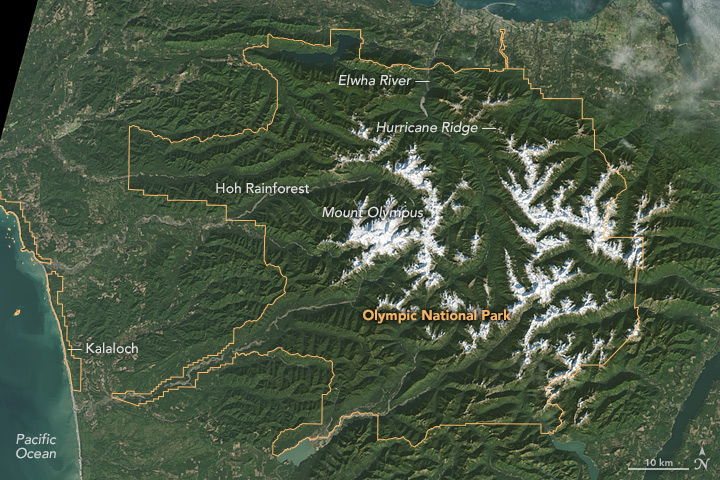 Olympic National Park
Olympic National Park
If you walked east across Olympic National Park, you would start at the rocky Pacific shoreline, move into rare temperate rainforests, ascend glaciers and rugged mountain peaks, and then descend into a dry rain shadow and alpine forest.
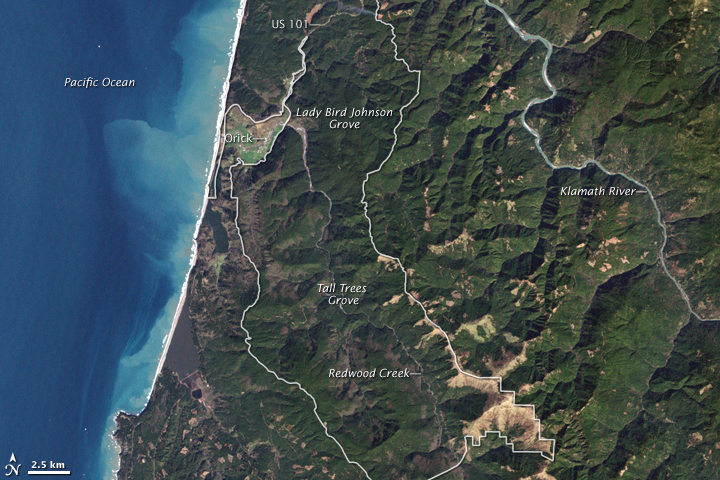 Redwood National and State Parks
Redwood National and State Parks
This image of the Redwood National Park includes two stands of trees: Lady Bird Johnson Grove and Tall Trees Grove. Redwood National Park occupies an area considered to be the most seismically active in the United States.
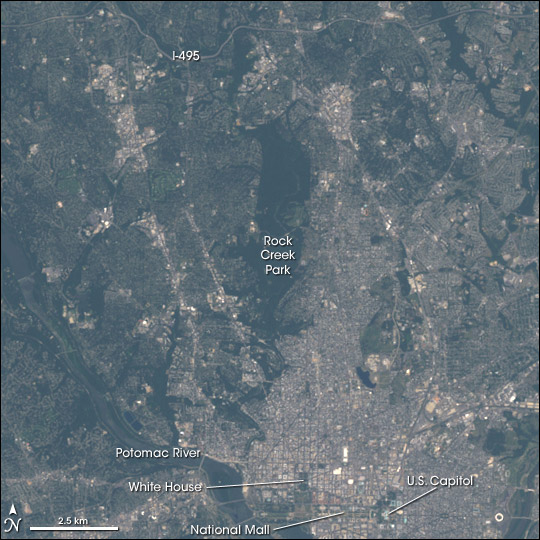 Rock Creek Park
Rock Creek Park
Rock Creek Park is a forested valley running through the District of Columbia along the banks of Rock Creek. The national park provides a green corridor from the heart of the city into the suburbs.
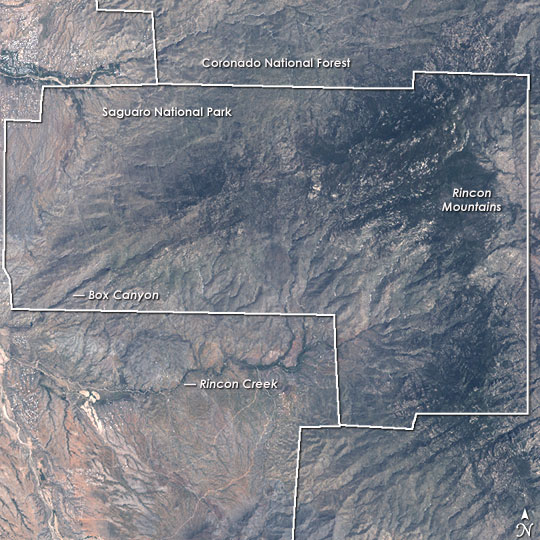 Saguaro National Park
Saguaro National Park
A single Saguaro cactus may live as long as 150 years and reach up 15 meters tall and weigh 8 tons, making it the largest cactus in the United States. One of the best places to see these emblematic cacti is the Saguaro National Park.
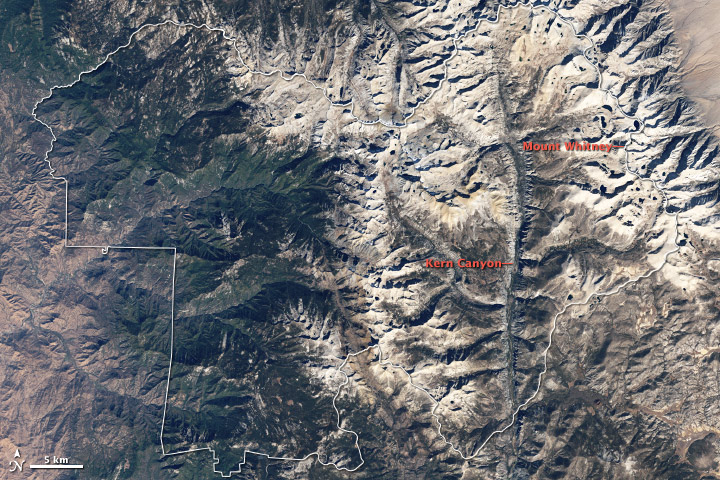 Sequoia National Park
Sequoia National Park
Naked peaks, sheltered valleys, snowfields, towering trees, and alpine meadows make up the varied landscape of Sequoia National Park in California. These forested mountains are home to the park's most famous giant sequoia trees.
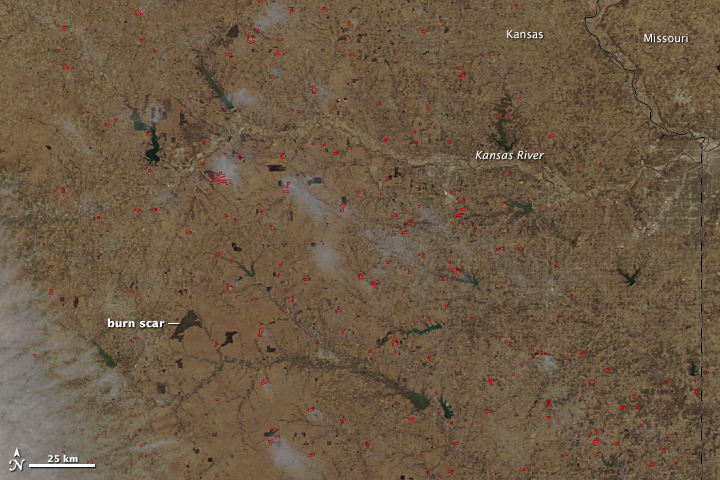 Tallgrass Prairie National Preserve
Tallgrass Prairie National Preserve
Fire is as much a part of the prairie landscape as grass. Before settlement, tallgrass prairie covered 170 million acres of North America. Today, less than 4% of the prairie remains, but fire is still a critical component of the ecosystem.
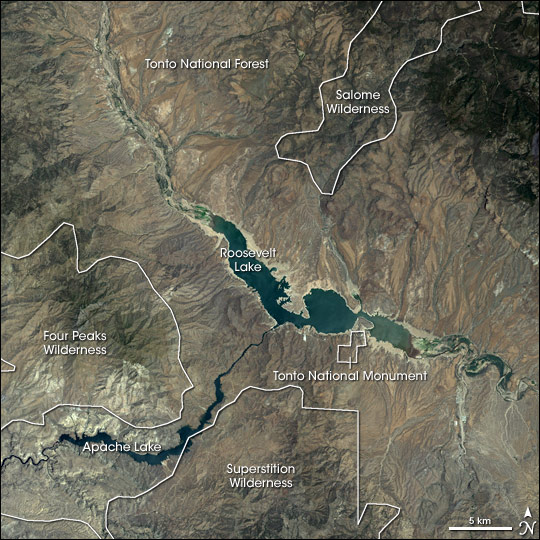 Tonto National Monument
Tonto National Monument
Tonto National Monument lies in the midst of the Tonto National Forest near Phoenix, Arizona. Cliff dwellings and cave homes can be found here, as well as Sonoran desert vegetation like the iconic saguaro cactus.
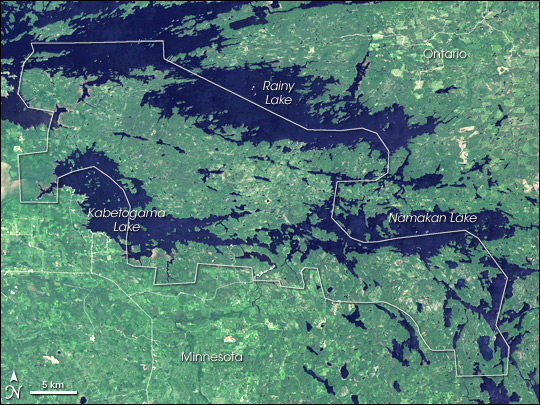 Voyageurs National Park
Voyageurs National Park
Park visitors wanting to experience the park to its fullest must leave their cars behind. Almost a third of the park is water, and travel through the park is usually by boat. The forested landscape belies the region's ice age past.
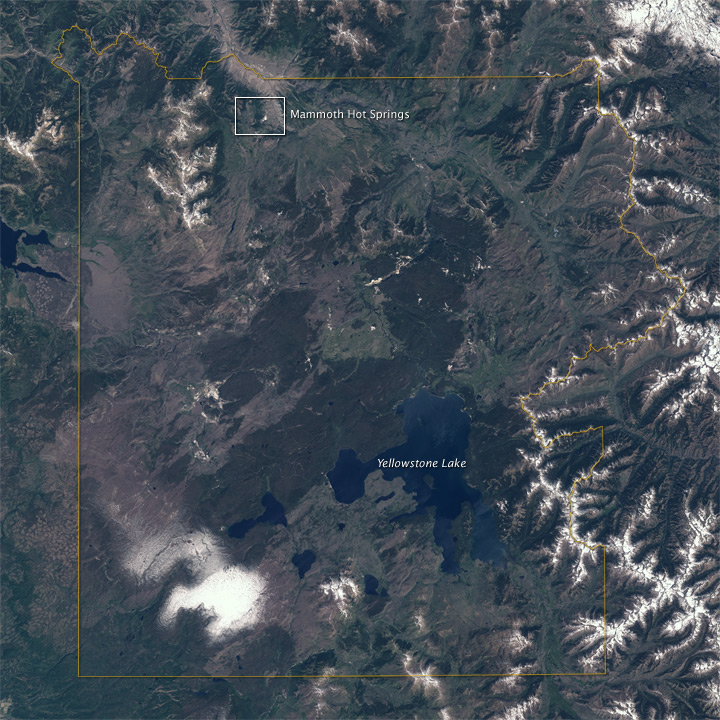 Yellowstone National Park– Mammoth Hot Springs
Yellowstone National Park– Mammoth Hot Springs
Yellowstone National Park sits atop vast, ancient, and still-active volcanic plumbing. Heat radiates off of an underground magma chamber, fueling Yellowstone's ten thousand hot springs, mud pots, terraces, and geysers.
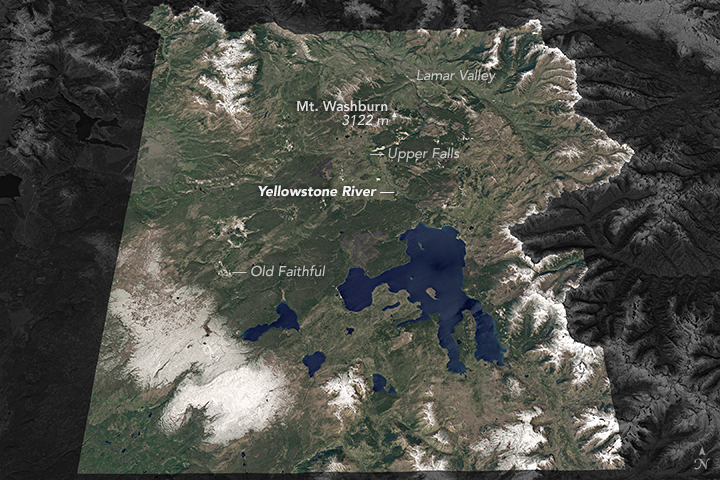 Yellowstone National Park– Landscape
Yellowstone National Park– Landscape
Established in 1872, Yellowstone was the first national park in the United States. The park exemplifies the spirit and purpose of the National Park Service, blending modern and ancient human history with nature in its raw complexity.


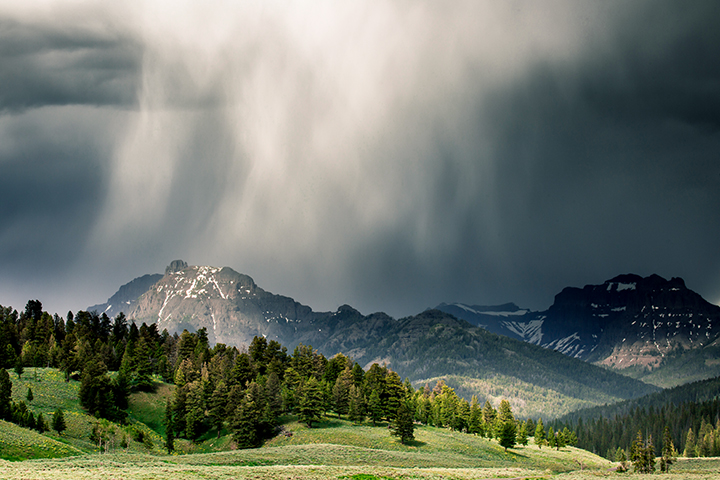 Natural Beauty at Risk:
Preparing for Climate Change in National Parks
Many National Parks were created to protect forests and ecosystems from development and fragmentation. But, changes in temperature, rainfall, and atmospheric concentrations of carbon dioxide could eventually do much to remake forests.
Natural Beauty at Risk:
Preparing for Climate Change in National Parks
Many National Parks were created to protect forests and ecosystems from development and fragmentation. But, changes in temperature, rainfall, and atmospheric concentrations of carbon dioxide could eventually do much to remake forests. Acadia National Park
Acadia National Park
 Arches National Park
Arches National Park
 Badlands National Park
Badlands National Park
 Bandelier National Monument
Bandelier National Monument
 Biscayne National Park
Biscayne National Park
 Bryce Canyon National Park
Bryce Canyon National Park
 Canyon de Chelly National Monument
Canyon de Chelly National Monument
 Cape Lookout National Seashore
Cape Lookout National Seashore
 Castle Mountains National Monument
Castle Mountains National Monument
 Dinosaur National Monument
Dinosaur National Monument
 Effigy Mounds National Monument
Effigy Mounds National Monument
 Everglades National Park
Everglades National Park
 Glacier Bay National Park and Preserve
Glacier Bay National Park and Preserve
 Grand Canyon National Park
Grand Canyon National Park
 Great Smoky Mountains National Park
Great Smoky Mountains National Park
 Isle Royale National Park
Isle Royale National Park
 John Day Fossil Beds National Monument
John Day Fossil Beds National Monument
 Joshua Tree National Park
Joshua Tree National Park
 Katmai National Park and Preserve
Katmai National Park and Preserve
 Natural Bridges National Monument
Natural Bridges National Monument
 Olympic National Park
Olympic National Park
 Redwood National and State Parks
Redwood National and State Parks
 Rock Creek Park
Rock Creek Park
 Saguaro National Park
Saguaro National Park
 Sequoia National Park
Sequoia National Park
 Tallgrass Prairie National Preserve
Tallgrass Prairie National Preserve
 Tonto National Monument
Tonto National Monument
 Voyageurs National Park
Voyageurs National Park
 Yellowstone National Park– Mammoth Hot Springs
Yellowstone National Park– Mammoth Hot Springs
 Yellowstone National Park– Landscape
Yellowstone National Park– Landscape